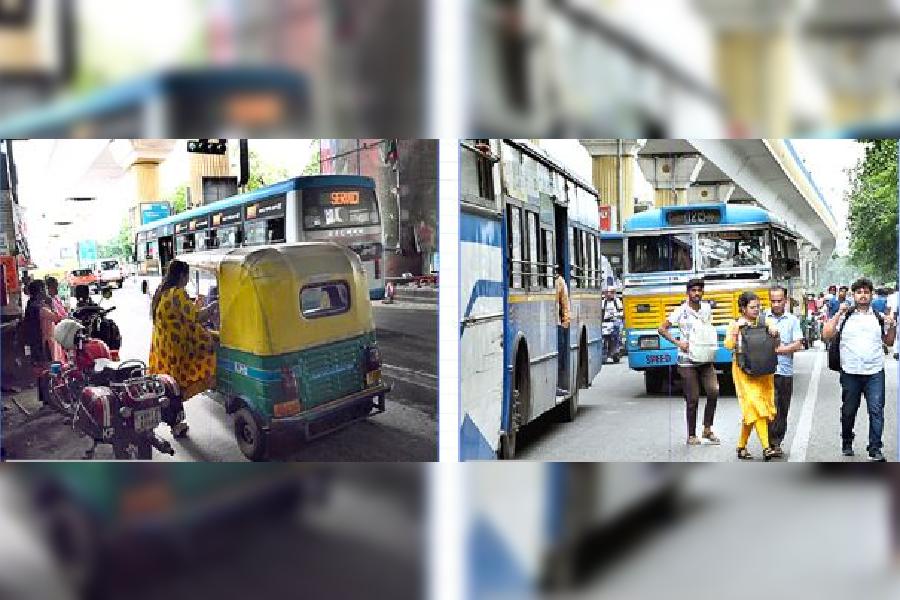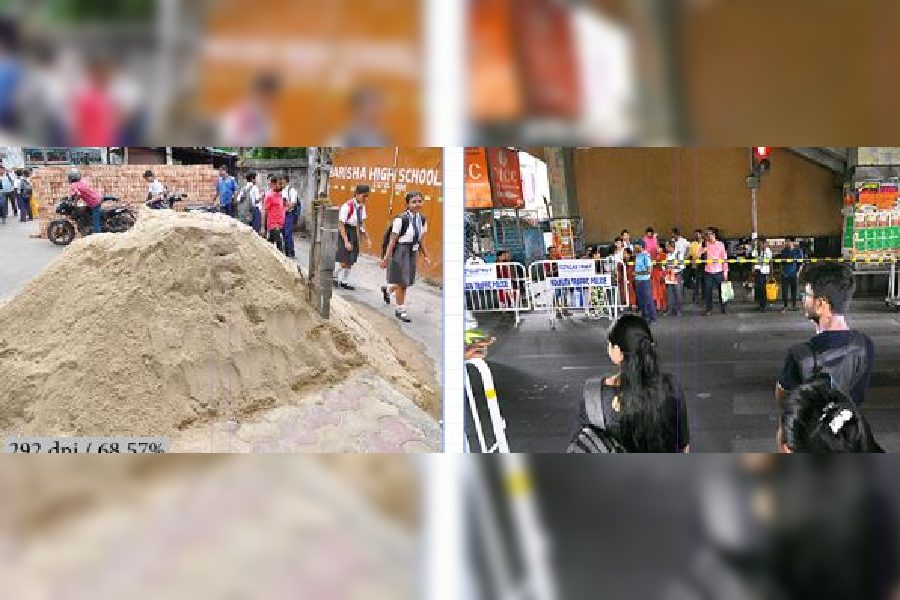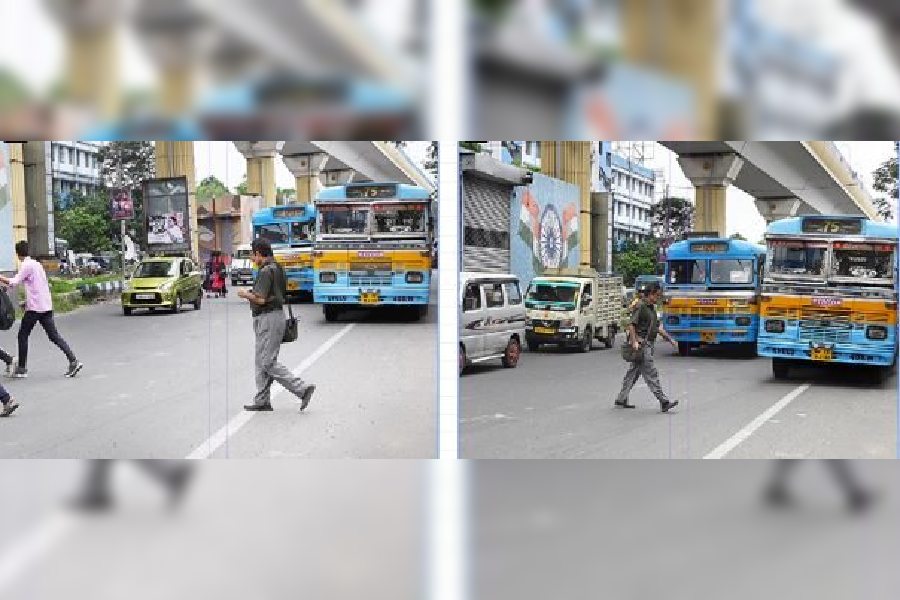A day after an eight-year-old boy was crushed to death at Behala Chowrasta, the intersection seemed a symbol of compliance of traffic rules on Saturday.
But 50m from the intersection, people were happily jaywalking and buses and autos picked up and dropped passengers in the middle of the thoroughfare.

An auto picks up a passenger when the signal is green; (Right) A bus drops off passengers in the middle of the road
The contrast underlined some of the traffic management challenges in Kolkata’s chaotic crossroads.
The Telegraph saw three sergeants, three constables and four civic volunteers deployed at the crossing for the 1.5 hours that it spent there. A drop gate that came down and went up in sync with the traffic signal, on the Thakurpukur-bound flank of the road on Friday evening, was helpful in managing pedestrian movement.
Four more drop gates have been installed at different points on Diamond Harbour Road, said a traffic officer.
Around 50m from the spot, the Thakurpukur-bound flank of Diamond Harbour Road threw up a different picture.
A middle-aged man, with a bag slung across his shoulders, started crossing the road when the signal was still green for vehicles. By the time he was in the middle of the road, two buses came close to him. He decided retreat was a better option. He came back to the starting point, perilously close to the buses but was back, safe, in the nick of time.
Closer to the intersection, on the same flank, an auto stopped to pick up a passenger when the signal was green as vehicles sped past.
A bus dropped passengers in the middle of the road. As they got down, an auto crept up from behind. The passengers were almost sandwiched between the bus and the auto.

Schoolchildren and commuters walk past a heap of sand and a pile of bricks; (Right) Pedestrians wait behind a drop gate
The intersection was, however, much better managed.
Men in uniform ensured pedestrians waited behind the drop gate till it was lifted, which meant pedestrians used the zebra crossing.
There was no such barrier on the Taratala-bound flank of the road. Two civic volunteers constantly nudged pedestrians to wait for the signal to turn red for vehicles before crossing the road. Every now and then, a pedestrian tried to move beyond the zebra crossing prompting the intervention of a volunteer or a cop.
Around 12.10pm, two women tried to move from the Taratala-bound flank to the Thakurpukur-bound flank when the signal was green for traffic. They were caught in the middle of the road with cars whizzing past them.
A sergeant kept his cool, politely telling them to come back and wait till the signal turned red. “Bhul hoye gachhe, bujhte parini (It was a mistake. I did not understand),” said one of the women.
“If people themselves don’t understand the importance of their lives, nobody can help. In the past 30 minutes, I have had to tell two people not to talk on mobile phones while walking on the road. When I warned of prosecution, both seemed offended,” said a sergeant.
A series of bollards and drop gates earmarked slices of the road on both flanks for pedestrians. Till before the accident, there were no such walking zones.
Many pedestrians said they were forced to walk on the road because the pavements on both sides of Diamond Harbour Road had been occupied by shops.
A heap of sand and a pile of bricks were spotted a stone’s throw from Barisha Uchcha Balika Vidyamandir — the school of Souraneel Sarkar, who died in Friday’s accident.
